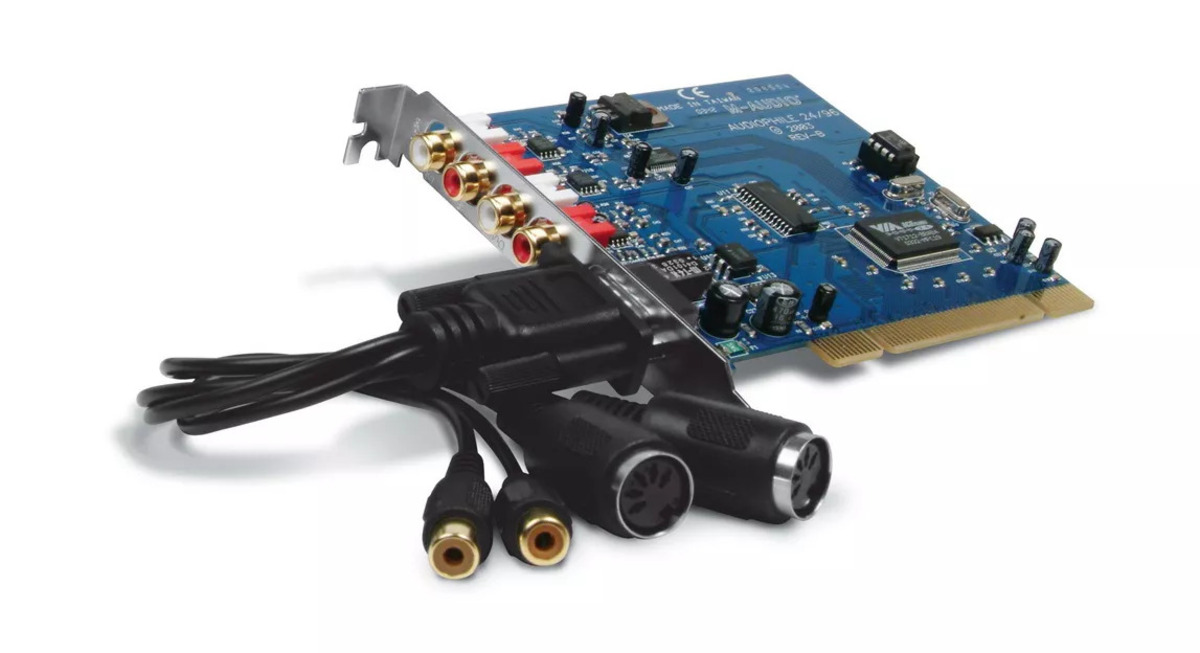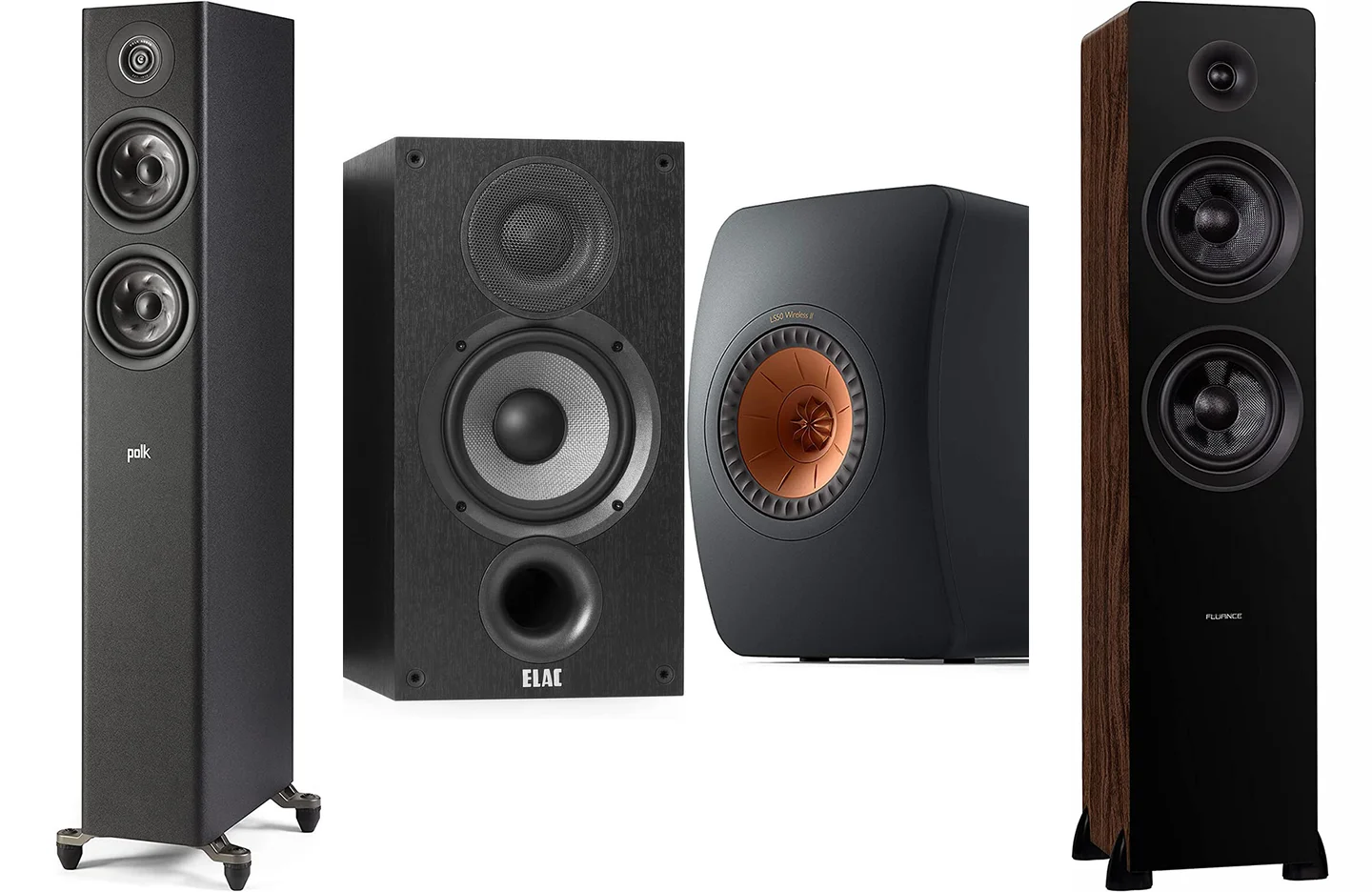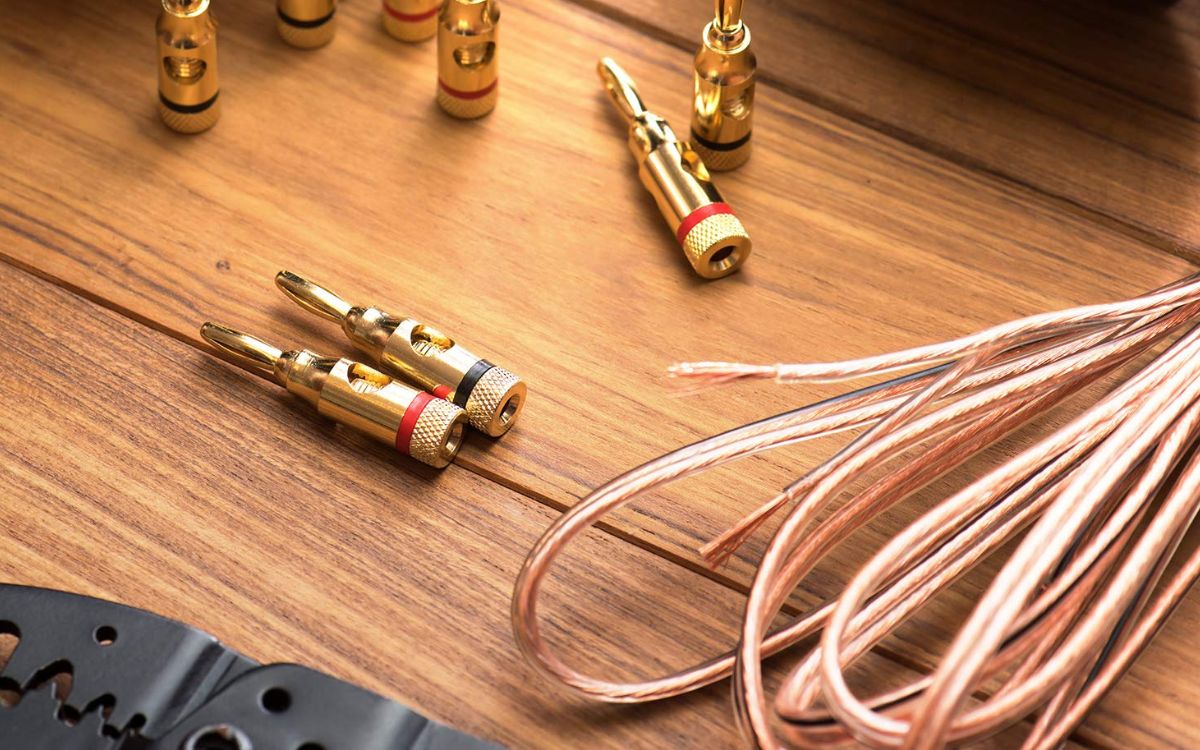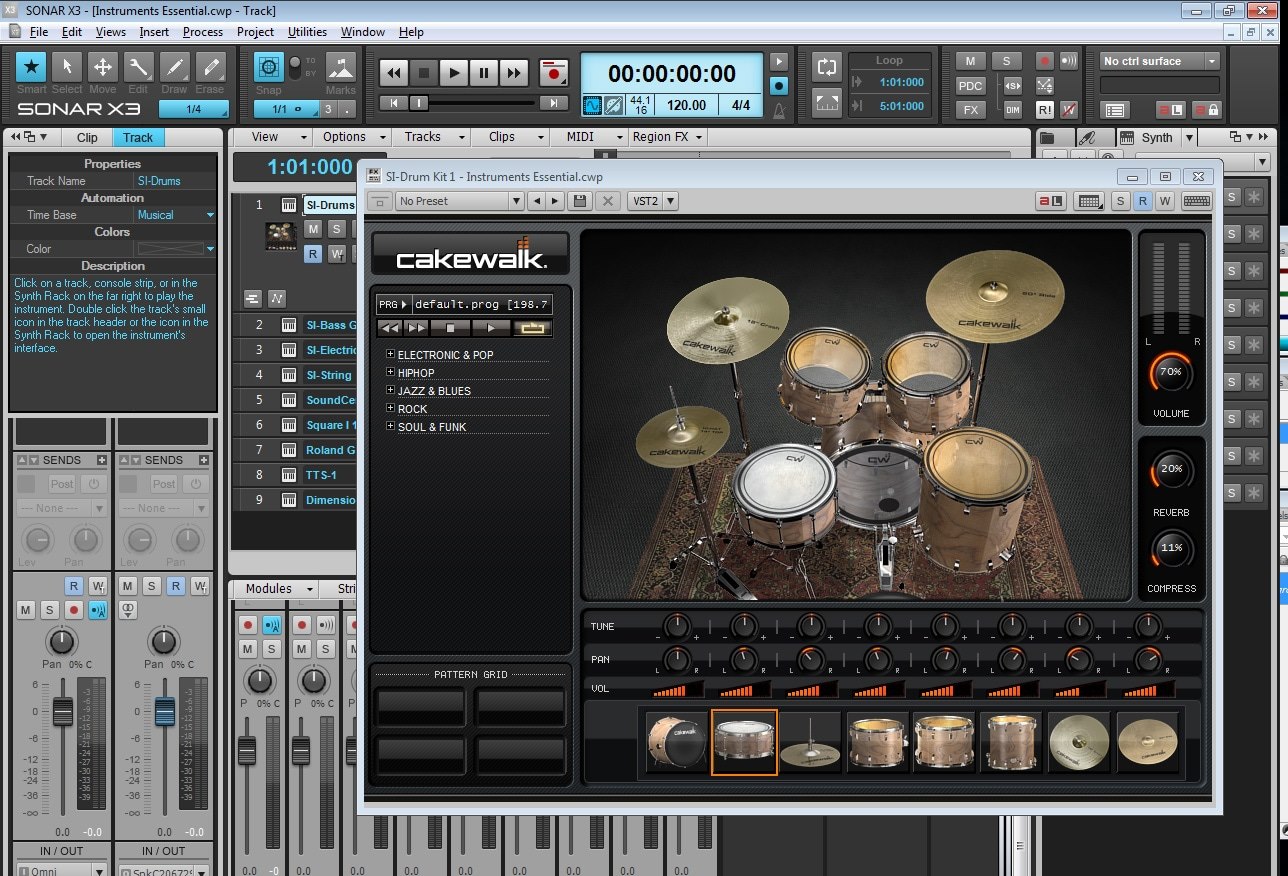Home>Production & Technology>Audiophile>How To Select Audiophile Speaker Wire


Audiophile
How To Select Audiophile Speaker Wire
Modified: January 22, 2024
Learn how to choose the perfect audiophile speaker wire for an immersive audio experience. Discover the best options and improve your sound quality today.
(Many of the links in this article redirect to a specific reviewed product. Your purchase of these products through affiliate links helps to generate commission for AudioLover.com, at no extra cost. Learn more)
Table of Contents
Introduction
Welcome to the world of audiophile speaker wire! If you’re someone who appreciates high-quality audio and wants to elevate your listening experience, selecting the right speaker wire is essential. While it may seem like a small detail, the right wire can make a significant difference in the overall sound reproduction of your audio system.
In this article, we will delve into the world of audiophile speaker wire and guide you on how to select the best wire for your needs. Whether you are a seasoned audiophile or someone who is just beginning to venture into the world of high-fidelity audio, this article will provide you with valuable insights to help you make an informed decision.
When it comes to audiophile speaker wire, understanding the different factors that contribute to its performance is crucial. Factors such as wire type, gauge, length, connectors, and termination options can all have an impact on the transmission of sound signals. By understanding these factors and how they relate to your audio system, you can ensure optimal performance and achieve the best possible audio quality.
Additionally, budget is an important consideration when selecting speaker wire. There are options available across a wide price range, and knowing how much you are willing to invest can help narrow down your choices.
So, whether you are setting up a new audio system or looking to upgrade your existing one, join us as we explore the world of audiophile speaker wire and help you make an informed decision to take your audio experience to new heights.
Understanding Audiophile Speaker Wire
Before diving into the selection process, it’s important to understand the basics of audiophile speaker wire. Speaker wire is essentially a conductive cable that transmits audio signals from your amplifier or receiver to your speakers. While it may seem like a simple component, the quality of the wire can have a noticeable impact on the overall sound quality.
Audiophile speaker wire is specifically designed to minimize signal loss and deliver a clean and accurate audio reproduction. It is built using high-quality materials and advanced construction techniques to ensure optimal performance. The goal is to provide a low impedance path for the audio signal, allowing it to flow with minimal distortion.
One key aspect to consider is the construction of the wire. It typically consists of two conductors, often referred to as the positive and negative leads. These conductors are usually made of copper, as it offers excellent conductivity and is cost-effective. Copper is known for its low electrical resistance, allowing for efficient transmission of electrical signals.
In addition to the conductors, the wire is insulated to protect against interference and prevent electrical shorts. Common insulation materials include PVC (Polyvinyl chloride), PE (Polyethylene), and Teflon. These materials are chosen for their durability and ability to maintain signal integrity.
Another important factor in understanding audiophile speaker wire is the concept of impedance. Impedance is a measure of how much a device resists the flow of alternating current (AC). In simple terms, it refers to the amount of electrical resistance presented by the wire to the audio signal. Lower impedance leads to more efficient signal transmission and is generally preferred for audiophile applications.
It’s worth noting that the length of the speaker wire can also impact impedance. Longer wires tend to have higher resistance and can introduce signal loss. Therefore, it is important to consider the distance between your amplifier and speakers when selecting the appropriate wire length.
By understanding the construction and concepts associated with audiophile speaker wire, you can make an informed decision when selecting the right wire for your audio system. In the next section, we will delve into the various factors to consider when choosing audiophile speaker wire.
Factors to Consider When Selecting Audiophile Speaker Wire
When selecting audiophile speaker wire, there are several factors to keep in mind to ensure optimal performance and compatibility with your audio system. Let’s explore these factors in more detail:
- Wire Type: There are various types of speaker wire available, including twisted pair, coaxial, and flat ribbon. Each type has its own advantages and considerations. Twisted pair wire, for example, offers good performance and flexibility, while coaxial cable provides better shielding against interference. Consider the specific needs of your audio system and the environment in which it will be used to determine the best wire type.
- Gauge and Thickness: The gauge of the wire refers to its thickness or diameter. The gauge is represented by a numerical value, with lower numbers indicating thicker wire. Thicker wire generally has lower resistance and can handle higher power levels with less loss. For most home audio setups, 16 or 14-gauge wire is sufficient. However, if you have a larger room or more powerful speakers, you may want to consider thicker wire.
- Length: The length of the speaker wire can impact signal loss and impedance. As a general rule, shorter wire lengths are preferred to minimize these issues. However, it’s essential to measure the distance between your amplifier and speakers to ensure you have enough wire. If you need a longer length, consider using thicker wire to compensate for potential signal loss.
- Connectors and Termination Options: Consider the connectors and termination options available for the speaker wire. Many wires come pre-terminated with connectors such as banana plugs or spades, which provide a secure and reliable connection. Alternatively, you can opt for bare wire and utilize binding posts or spring clips on your speakers and amplifier. Choose the option that offers ease of installation and a solid connection.
- Budget and Price Range: Speaker wire comes in a range of prices, from budget-friendly options to high-end offerings. Consider your budget and the level of audio quality you are aiming to achieve. While it’s important to invest in a quality wire, remember that there is a point of diminishing returns. Determine a reasonable price range that aligns with your needs and budget.
By considering these factors, you can narrow down your options and find the best audiophile speaker wire for your specific requirements. In the next section, we will explore the different types of audiophile speaker wire available in the market.
Types of Audiophile Speaker Wire
When it comes to selecting audiophile speaker wire, there are several types to choose from, each with its own characteristics and benefits. Let’s explore some of the most common types:
- Twisted Pair Wire: Twisted pair wire is one of the most popular choices for audiophile applications. It consists of two insulated copper conductors twisted together. This design helps to minimize electromagnetic interference and crosstalk, resulting in cleaner audio signals. Twisted pair wire is flexible, easy to install, and provides good performance at an affordable price.
- Coaxial Cable: Coaxial cable is another option commonly used in audiophile speaker setups. It features a central conductor surrounded by an insulating layer, a shielding layer, and an outer insulating layer. The shielded design provides excellent protection against interference and ensures reliable signal transmission. Coaxial cable is typically more expensive than twisted pair wire but offers superior shielding capabilities.
- Flat Ribbon Cable: Flat ribbon cable is a thin and flat wire consisting of multiple parallel conductors. It is often used in professional audio setups and sound systems. The flat design allows for easy cable management and installation, especially in tight spaces. Flat ribbon cable is known for its uniform impedance across all conductors, ensuring consistent signal transfer and precise audio reproduction.
- Solid Core Wire: Solid core wire is made of a single, solid copper conductor. It is known for its excellent conductivity and minimal signal loss. Solid core wire provides a stable electrical connection and is commonly used in high-end audio systems where low resistance is crucial. However, it may be less flexible compared to stranded wire, making it more challenging to route and install.
- Bi-Wire and Bi-Amping Cables: Bi-wire and bi-amping cables are specialized speaker wire configurations designed for speakers with separate inputs for high and low frequencies or multiple amplifiers. Bi-wire cables feature multiple conductors that can be connected to separate speaker terminals, reducing signal interaction and improving overall audio performance. Bi-amping cables allow you to connect separate amplifiers to different frequency ranges of the speaker, offering enhanced control and clarity.
It’s important to note that the choice of speaker wire type may depend on personal preference, system requirements, and budget. Experimenting with different types can help you determine which wire works best for your specific setup. In the next section, we will explore the importance of wire gauge and thickness in audiophile speaker wire selection.
Gauge and Thickness of Speaker Wire
When selecting audiophile speaker wire, one of the critical factors to consider is the gauge or thickness of the wire. The gauge determines the wire’s electrical resistance, which can affect the efficiency and performance of your audio system.
Speaker wire gauge is represented by a numerical value, with lower numbers indicating thicker wire. The most common gauges used in home audio setups are 16, 14, and 12. It’s important to choose a gauge that matches the power requirements of your speakers and amplifier.
Thicker gauge wire has lower resistance, which means it can handle higher power levels with minimal signal loss. It is ideal for long cable runs or setups with powerful speakers. For example, 12-gauge wire is typically recommended for amplifiers with outputs exceeding 100 watts per channel.
On the other hand, thinner gauge wire, such as 16 or 18, is suitable for shorter cable runs or lower-power setups. It is more flexible and easier to manage than thicker wire.
It’s important to note that while thicker gauge wire offers advantages in terms of lower resistance, the benefits may be minimal in typical home audio setups. The difference in performance between 16 and 14-gauge wire, for example, might not be noticeable unless you have exceptionally long cable runs or high-powered speakers.
When selecting the gauge of speaker wire, it’s essential to consider both the power requirements of your system and the length of the cable runs. Longer runs and higher-power systems generally benefit from thicker gauge wire to minimize signal loss. However, for most average-sized rooms and modest home audio setups, 16 or 14-gauge wire is usually sufficient.
Lastly, it’s worth mentioning that stranded wire is commonly used for speaker connections due to its flexibility. Stranded wire consists of multiple smaller wires twisted together, offering better flexibility and making it easier to route and install. Solid core wire, while less flexible, is preferred by some audiophiles for its excellent conductivity and minimal signal loss.
By considering the gauge and thickness of the speaker wire, you can ensure optimal performance and compatibility with your audio system. In the next section, we will explore the importance of wire length in audiophile speaker wire selection.
Length of Speaker Wire
The length of the speaker wire is an important consideration when selecting audiophile speaker wire. The distance between your amplifier or receiver and your speakers can have an impact on the overall performance and audio quality.
As the length of the wire increases, so does the resistance and signal loss. This is because the wire itself offers resistance to the flow of electrical current. The longer the wire, the greater the resistance, which can result in a decrease in audio performance.
When choosing the length of your speaker wire, it’s important to measure the distance accurately and consider the placement of your speakers in relation to your audio source. Keep in mind that it’s always better to have slightly extra wire length than not enough, as it allows for flexibility if you ever need to rearrange your audio setup.
For typical home audio setups, where the distance between the amplifier and speakers is relatively short, the effect of wire length on audio performance may be minimal. However, for longer cable runs, such as in large rooms or home theater setups, it becomes more critical to select an appropriate wire gauge to compensate for potential signal loss.
One approach to counteract signal loss due to long cable runs is to use thicker gauge wire. Thicker wire has lower resistance, allowing for better signal transmission over longer distances. For example, if you plan to have speakers placed at a significant distance from your audio source, you may want to consider using 12 or 14-gauge wire instead of 16-gauge wire.
It’s also worth noting that while the length of the wire affects the overall resistance, it’s not the only factor to consider. The wire material, gauge, and construction also play a role in determining the overall performance. Therefore, it’s important to strike a balance between wire length and gauge when selecting speaker wire.
By understanding the impact of wire length on audio performance and considering the specific needs of your audio setup, you can select the appropriate length of speaker wire to ensure optimal signal transmission and audio quality.
In the next section, we will explore the different connector and termination options available for audiophile speaker wire.
Connectors and Termination Options
When selecting audiophile speaker wire, it’s crucial to consider the connectors and termination options available. The connectors play a key role in ensuring a secure and reliable connection between your audio components.
There are several common types of connectors used with speaker wire:
- Banana Plugs: Banana plugs are widely used in audio setups due to their ease of use and reliable connection. These plugs feature a pin-like design that inserts into the corresponding terminals on your speakers and amplifier. Banana plugs offer convenient installation and are highly recommended for their durability and ability to maintain a solid electrical connection.
- Spade Connectors: Spade connectors, also known as fork connectors, feature a flat, U-shaped metal terminal that slides under the binding posts on your speakers and amplifier. They provide a secure connection by wrapping around the post and are well-suited for high-powered systems or speakers with dedicated binding posts.
- Pin Connectors: Pin connectors are simple metal pins that insert directly into the binding posts on your audio components. They are an affordable and straightforward option, but may not offer the same level of convenience or durability as banana plugs or spade connectors.
In addition to the different connector options, the termination of the speaker wire is another consideration. Some wires come pre-terminated with connectors, while others may require you to terminate them yourself using options such as soldering, crimping, or using terminal blocks.
Pre-terminated speaker wires offer convenience and ensure a consistent connection between your audio components. They are recommended for their ease of installation, especially for beginners or those who prefer a plug-and-play setup. However, terminating your own speaker wire allows for more flexibility and customization, as you can choose the specific connectors and termination methods that best suit your needs.
It’s important to select connectors and termination options that are compatible with your speakers and amplifier. Ensure that the connectors match the binding posts or terminals on your audio components to guarantee a proper and secure connection. Additionally, make sure to follow the manufacturer’s instructions for terminating your speaker wire to ensure optimal performance and long-term reliability.
By considering the connector options and termination methods, you can ensure a solid and reliable connection between your audio components, ultimately enhancing the overall audio performance of your system.
In the next section, we will discuss the importance of considering your budget and price range when selecting audiophile speaker wire.
Budget and Price Range
When it comes to selecting audiophile speaker wire, considering your budget and price range is an important aspect. Speaker wire is available at various price points, and determining your budget helps narrow down your options and find the best wire for your needs.
It’s worth noting that while high-quality speaker wire can make a difference in audio performance, there is a point of diminishing returns. More expensive speaker wire does not necessarily guarantee a significant improvement in sound quality compared to moderately priced options.
It’s essential to strike a balance between investing in a quality wire and aligning it with your specific needs. Consider the capabilities of your audio system, the size of your room, and the level of audio fidelity you are aiming to achieve.
If you have a modest audio setup or are on a tight budget, there are plenty of affordable speaker wire options available that can deliver satisfactory performance. Look for reputable brands that offer good value for money. It’s also a good idea to read reviews and seek recommendations from audio enthusiasts to help you make an informed decision.
On the other hand, if you have a high-end audio system and are looking for top-of-the-line performance, you may consider investing in premium audiophile-grade speaker wire. These wires often feature superior construction, advanced shielding techniques, and use high-purity materials to minimize signal loss and distortion. However, keep in mind that the discernible difference in sound quality may be subtle and might not justify the significant price difference for everyone.
Regardless of your budget, it’s crucial to prioritize the quality of the wire itself rather than overly focusing on extravagant claims or expensive marketing tactics. Look for wires that are made from high-quality materials, have good insulation, and are constructed with attention to detail to ensure reliable and consistent performance.
Remember, the goal is to find a speaker wire that strikes the right balance between performance and affordability for your specific audio system requirements. By considering your budget and price range, you can make an informed decision and select a speaker wire that satisfies your audio needs without breaking the bank.
In the next section, we will summarize the key points discussed and conclude our guide to selecting audiophile speaker wire.
Conclusion
Selecting the right audiophile speaker wire is crucial for achieving optimal audio performance and enhancing your overall listening experience. By understanding the various factors involved in choosing speaker wire, you can make an informed decision that aligns with your audio system and listening preferences.
Consider the different types of speaker wire available, such as twisted pair, coaxial, flat ribbon, and solid core, and choose one that suits your specific requirements and budget. Pay attention to the gauge and thickness of the wire, considering the power requirements of your system and the length of your cable runs. Thicker gauge wire is generally recommended for longer distances and higher-power setups.
Connectors and termination options play a crucial role in ensuring a secure and reliable connection. Banana plugs, spade connectors, and pin connectors are popular choices, and pre-terminated wires offer convenience, while self-termination allows for customization.
Lastly, determine your budget and price range, keeping in mind that you don’t necessarily need to spend a fortune to get suitable speaker wire. Consider the capabilities of your system and strike a balance between performance and affordability.
Now armed with the knowledge of these key factors, you can confidently choose the best audiophile speaker wire to suit your audio system and preferences. Whether you’re setting up a new audio system or upgrading an existing one, selecting the right speaker wire can make a noticeable difference in the quality and clarity of your audio reproduction.
Remember to always prioritize the quality of the wire itself and seek out reputable brands that offer reliable and well-constructed options. By taking the time to research and consider the specific needs of your audio setup, you can elevate your audio experience and enjoy your favorite music and movies with enhanced precision and fidelity.
Happy listening!











